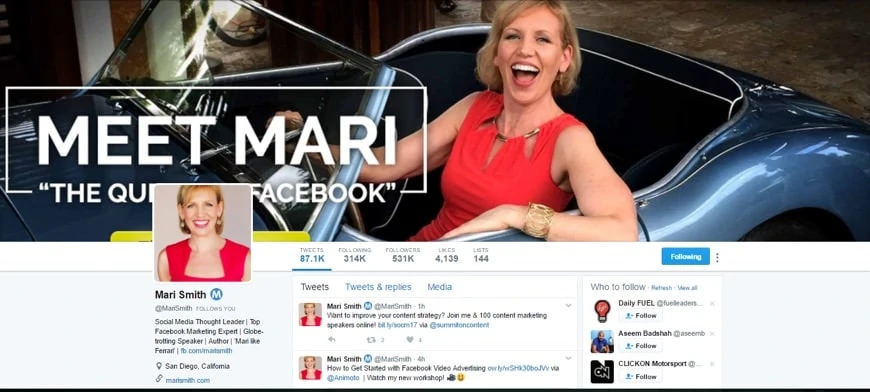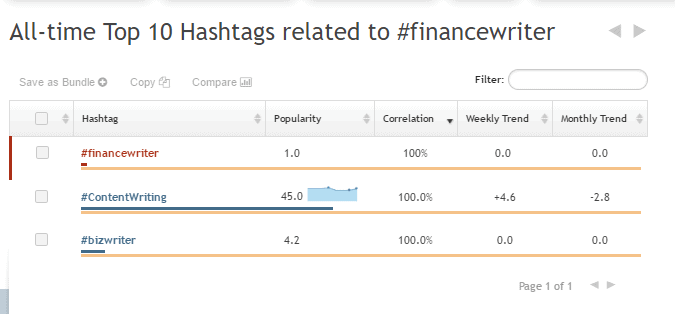Branding for Freelancers: The Essential Guide to Getting Noticed, was part of Hubstaff’s freelancing month 2017, where we feature insights by experienced freelancers about how they get clients, manage their workload, and more.
The freelance market is a tough one. Some of us succeed, and some of struggle. One of the key differentiators between those groups is branding.
Branding for freelancers encompasses many elements. Your logo, design, bio, and tone of voice are all distinct characteristics that make your business unique. In this article, I’ll show you how to make your freelance business stand out.
Whether you’re just starting, or already established, prepare to build an awesome freelance brand.
1. Decide on your name
A strong name is easily recognizable, and that’s important for good branding. The dilemma for many freelancers is whether to name their business after themselves or create a brand name.
Here are your freelance branding options:
Create a brand name and matching brand persona
Creating a brand name can provide a little distance between the “real” you and the professional you. Some find this to be a good thing.
If you want to register your company name, create a logo, build an on-brand website and maybe even register your brand as a company, you’ll have an easier time if you have a brand name.
The other advantage is that you don’t need to be a “one-man band” forever. With a brand name, you have more potential to grow into an agency that employs freelancers later on.
Use your own name and personality as your trademark
Using your own name is easiest, as you’re creating a brand around yourself. If you choose this option, you need to understand that everything you do will be linked to your professional persona.
That means no drunken Twitter selfies and no angry political rants. If your name is long or difficult to spell, this option might not be the best idea—especially if you’re looking for international freelancing work.
You’ll also need to grab a URL and matching social profiles. Check out social media legend Mari Smith for inspiration.

Create both and link them together
I went for option three and created www.charlisays.com, which is linked to www.charliday.com.
This was the easiest way for me to manage my freelance business. I’m also linking my name with my brand and making it easier to check out my credentials on sites like LinkedIn.
Another freelancer who does a cool job of this is Graham Smith (@thelogosmith). Graham cleverly combines his name and his profession for an easily identifiable profile and website.
If you’re serious about freelancing, it’s a good idea to purchase your name as a URL, even if you don’t plan on using it it.
Make It Happen
Even if you’re an established freelancer, it’s not too late to review your name and decide if it’s working out for you. Think about what your potential clients will be searching for.
For example, if you’re a designer, you’ll want to show up in search results when people search for “design a logo,” “have logo designed,” or “custom logo development.”
If your brand name isn’t hitting the keywords searched by your audience, you could be missing out on valuable clients. If your URL is CindyJohnstonWrites.com, for example, it probably won’t help you show up in searches.
2. Choose a Great Avatar
Being easily identifiable is an essential part of your branding strategy. This applies whether you’re using a brand name or your own. The most important thing here is to choose an avatar and use it consistently on all your channels.
You have two choices:
Use a photo of yourself
Your photo is a great way to establish yourself as a living, breathing human being. If you’re a photographer, artist, or designer, it’s also an opportunity to show off your creative side.
Clients like to know who they’re in business with, and using your own photo can make you seem more personable. My advice here is to spend a bit of cash to get your photo taken professionally in a studio. Think about the clothes you’re wearing, the background, the lighting, and the way you want to appear to clients.
Are you knowledgeable and assertive or quirky and creative? A professional photo speaks volumes and can sometimes say more than your entire bio. If you’re a cartoonist or artist, why not turn yourself into a cartoon avatar? There are tons of gigs on Fiverr if you don’t want to make it yourself.
Check out Jeff Bullas for inspiration:
![]()
Use a logo
If you’re using a brand name instead of your own, you’ll want to use a logo. And it needs to be a good one. Your logo design and placement should be consistent throughout your website, blog, and profiles.
Even if you already have a logo, it’s never too late to make a better one.
Check out 99Designs, which connects you to talented logo designers for as little as $299. Unless you’re a graphic designer, chances are you won’t be able to create a memorable logo for your brand. Spend the cash and get one that works for you.
Make it happen
One great way to ensure photo consistency across the web is to use a free program like Gravatar.
Gravatar stands for “globally recognized avatar,” and millions of people and WordPress websites use it. Whenever you blog or leave a comment online, Gravatar will automatically populate your photo and bio. This is an especially cool tool for bloggers.
You can check out mine below:
![]()
3. Know your brand’s voice
This is where it can all go wrong for freelancers who are stuck in a bit of a Norman Bates situation.

Are you speaking as you or as your brand? What’s the difference? Are you adjusting your message depending on who you’re speaking to?
Some freelancers mistakenly modify their brand message depending on their audience. For example, a freelancer may be very professional and serious on their website, then adopt a playful or cheeky tone on Twitter.
This approach is ultimately ineffective and confusing for clients. To maintain a strong brand, you must be consistent in presenting it.
Want to establish a strong brand voice for your freelance brand? Click here to download our free worksheet!
This also means your brand shouldn’t be too far from your actual personality. If it is, you’ll have difficulty keeping up the persona. Your name, logo design, blog, and social media accounts all need to represent you in an honest way.
Make it happen
Try creating a brand style guide for yourself using Frontify. This will help you nail down your brand colors, typography, style guide and brand voice. It also makes it easy for you to convey your brand to any future employees you might want to take on.

4. Perfect your bio
Have you ever noticed how difficult it is to write your own bio? Even if you’re a writer, trying to get it right can be really frustrating. Too modest and you won’t get noticed, too sales-y and you turn people off.
However, perfecting your bio is essential if you want to brand your freelance business and get noticed. With millions of freelancers available for hire, employers may only glance at the first line of your bio for a few seconds. Here are the things you’ll need:
A long bio
The first thing you need to do is write your long bio, because everything else will be based on this. Your long bio should include a section about you, a list of your skills, links to the projects you’ve worked on, contact details, and a few interesting facts about you.
A short bio
Once you have your full bio, condense it down to 200 words for your LinkedIn and Facebook profile pages. You can lose the lengthy history, but keep a few key facts and the URLs of the projects you’ve worked on.
A tagline
This can be difficult. Ideally, a tagline summarizes what you do in a catchy way while also hitting those SEO sweet spots. Keep it short—ideally under 10 words. For example, “Number 1 British finance and forex writer in Cyprus” or “Freelance Drupal site developer based in Dallas” may not be glamorous, but they’ll get you noticed.
An elevator pitch
Your elevator pitch should be client-focused and summarize what you do in one or two sentences. For example, “I create logos and graphics that are completely original and help define your brand.” For your Twitter profile, you can condense it down even further and make it a little more fun.
For example, “#graphic designer #logo maker and #photoshop guru. Likes frolicking in yellow meadows.” You get the idea.
(You should already have an elevator pitch as part of your professional networking preparation; if you don’t, do this as soon as you can!)
Make it happen
Keeping your bio consistent across all channels is an important part of self-branding. Remember that hashtags in your social media bios can help you stand out, too. Check out Hashtagify for a list of popular hashtags for your industry niche. Once you know them, use them in your profile.

5. Pick your social media channels
So you have your brand name, your website, your avatar and your bio. What next?
Creating the marketing materials behind your freelance brand is just the beginning and won’t be enough to get you new clients. This is where you’ll have to hustle—and the best place to do that is on social media, where 37% of employers pick up their new hires.
When it comes to social media, many freelancers think they have to be everywhere. But the opposite can be true: fewer networks can have a greater impact.
When you focus your efforts, you’re not diluting or duplicating your content. The idea is to identify the right social networks to create the results you want to see.
Which social media channels should you be on?
Here’s a quick guide to the social media networks you could be owning as a freelancer:
- Instagram—If you’re a photographer, designer, artist, or travel blogger, this one’s for you. If you’re a coder . . . not so much.
- YouTube / Vimeo—These are the biggest video sharing sites around right now. If you’re a video editor, graphic designer, or social media personality and able to produce high quality videos, you should definitely have your own channel.
- Twitter—There’s something for everyone here, and using the right hashtags can help you connect with your niche. Freelancers of all types can find success here.
- Facebook—Having a page can be beneficial for all freelancing niches. Remember, though, that Facebook’s organic algorithm now shows page posts to just 6.5% of your fans. Unless you pay, of course.
- LinkedIn—Having an awesome LinkedIn profile is a must for freelancers looking to stand out. Your profile needs to include all the skills your clients would want to see and examples of your work. LinkedIn is also a great place to network with influencers who can help you to get noticed.
- Reddit—If you’re a social media manager, writer, developer or designer who can create informative and interesting articles, you should give it a try. Competition on Reddit is fierce though, so take the time to think about a compelling story.
- Pinterest—If you’re a freelancer selling art, photography, or crafts then you need to be here. This is the only social network dominated by women (71%). With buyable pins, you can not only promote your work, but sell it too.
Make it happen
Branding doesn’t have to be hard work. If you choose the right social media sites, you can share your passion and attract new business at the same time.
6. Start blogging
Your blog is an essential tool that will help you expand on your brand statement, promote your services, and sell yourself. But many freelancers don’t take advantage.
Freelance marketplaces are great, but you still need to promote yourself independently. Plus, any business you get through your blog is commission free!
One common misconception on this issue is that only writers should have a blog. All freelancers can and should have a blog where they showcase their work.
Here are some examples of blog post ideas for a few different freelance professions:
For developers
- 10 Coding Mistakes Beginners Always Make
- 7 CSS Tools You Should Be Using
- Open Source CSS Snippets For Colorful Graphics
For photographers
- How To Pose Like A Model In Your Next Photo
- 5 Mistakes Couples Make With Their Wedding Photography
- My Top 10 Photographic Destinations
For graphic Designers
- 5 Beautiful Font Combinations
- Beginner Design Mistakes
- Top Graphic Designs From Last Year
Make it happen
The key to a great blog is to provide enough information to engage your reader, but not enough for them to do the job without you! Your call to action for clients should always be to contact you for help with their project.
Branding for freelancers can be tough—but it’s essential
Branding your freelance is business isn’t always easy. We’re often so busy working for clients that we forget to work on our own branding.
But by fostering a strong brand, you’ll build a loyal following, improve your searchability, and gain more repeat business.
Even the most successful freelancers care about branding. I asked some industry leaders for their top tips, and I’ll leave you with their comments.
Content marketing specialist Lisa Kalner Williams…
SEO and digital guru Ed Leake…
Top content writing hub Contentworks…
Belgian design guru Veerle Pieters…
And last but not least, the legendary designer Heydon…
How do you brand your freelance business? What are you going to work on to improve your branding? Share your thoughts in the comments below or tweet us (@hubstaff and @charli_says) to let us know!




